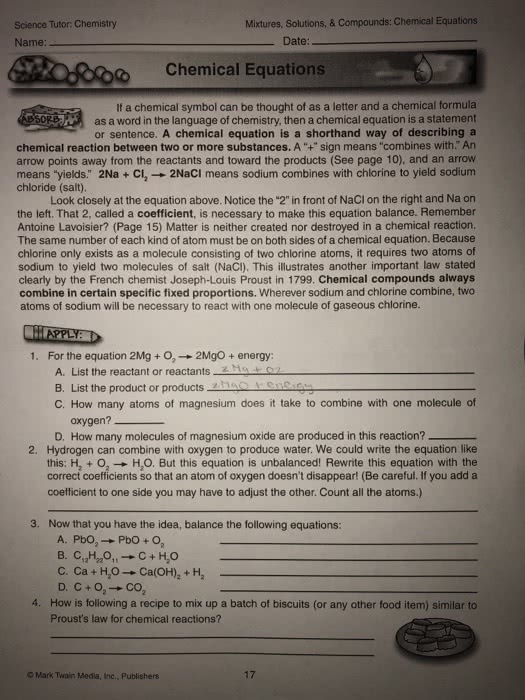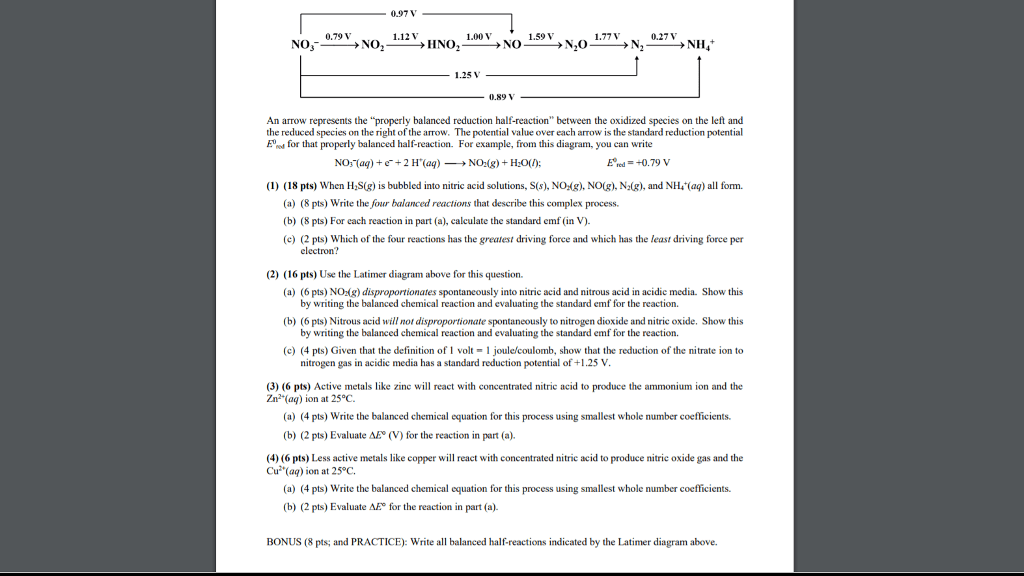CHEM 1111 Chapter Notes - Chapter 8: Sulfur Dioxide, Ammonium Chloride, Combustion Analysis
66 views6 pages
Document Summary
Chemical reaction: third hypothesis of john dalton"s theory described it as a process that neither creates nor destroys atoms, it rearranges atoms in chemical compounds, examples: Explosive combination of hydrogen and oxygen gases to produce water: involve changes in energy. Chemical equation: uses chemical symbols to denote what occurs in a chemical reaction. Ammonia and hydrogen chloride react to produce ammonium chloride. Calcium carbonation reactions to produce calcium oxide and carbon dioxide. Equation for process by which sulfur and oxygen react to produce sulfur dioxide. Equation for the reaction of sulfur trioxide and water to produce sulfuric acid. Reactant: each chemical species that appears to the left of the arrow, substances that are consumed in the course of a chemical reaction. Product: each substance that appears to the right of the arrow, substances that form during the course of a chemical reaction.
Get access
Grade+20% off
$8 USD/m$10 USD/m
Billed $96 USD annually

Homework Help
Study Guides
Textbook Solutions
Class Notes
Textbook Notes
Booster Class
40 Verified Answers
Class+
$8 USD/m
Billed $96 USD annually

Homework Help
Study Guides
Textbook Solutions
Class Notes
Textbook Notes
Booster Class
30 Verified Answers
Related textbook solutions
Chemistry: Structure and Properties
2 Edition,
Tro
ISBN: 9780134293936
Basic Chemistry
5 Edition,
Timberlake
ISBN: 9780134138046
Principles of Chemistry Molecular Approach
4th Edition,
Tro
ISBN: 9780134112831
Principles of Chemistry Molecular Approach
3rd Edition, 2014
Tro
ISBN: 9780321971944
Chemistry: Structure and Properties
2nd Edition,
Tro
ISBN: 9780134293936
Chemistry: A Molecular Approach
3rd Edition,
Tro
ISBN: 9780321809247
Chemistry: A Molecular Approach
5th Edition,
Tro
ISBN: 9780134874371
Principles of Chemistry: A Molecular Approach
4th Edition,
Tro
ISBN: 9780134895741
Chemistry: The Central Science
14th Edition, 2017
Brown
ISBN: 9780134414232


